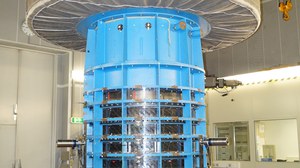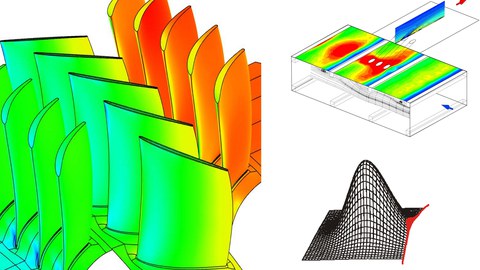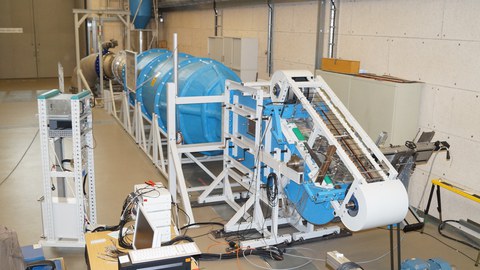Research in touch with the latest trends
The Chair has well-established relations to various research communities. In addition to the more typical applications, such as low-speed aerodynamics with cascade and compressor tests, we deal with the investigation of flows in seals and other components, using probabilistics (on aircraft engines), and the application of numerical methods in turbomachinery.
Research priorities
Aerodynamics, aeroelasticity and cooling in turbomachinery
The study of the aerodynamics of turbine and compressor blading is the historical basis of the chair. A plurality of cascade wind tunnels covering subsonic to transonic speed ranges is available for the experimental analysis of different bladings, with a focus on the understanding of the secondary flows in a plurality of cascade wind tunnels with a subsonic to transonic speed range available. Moreover, the four-stage Low Speed Research Compressor (LSRC) offers excellent opportunities for investigating novel bladings, flow control concepts and the behaviour at the operating limit in multistage environments.
The Aeroelasticity of turbomachinery components is a relatively new area of research at the Institute of Fluid Mechanics, applying experimental and numerical methods.
The efficient cooling of highly loaded turbine blades is the basis for high efficiency in gas turbines and aircraft engines. The research on the chair examines the platform film cooling of inlet guide vanes, under the influence of secondary flows in the cascade wind tunnel, and the interaction of internal cooling and film cooling in a flat plate film cooling channel.
Contact for test rigs and related projects: Dr. Martin Lange
Probabilistic
There are increasingly higher demands on modern gas turbines for reasons of safety, ecology and economy. Thus, the developers of these machines are obliged to go closer to the limits of the material. Nevertheless, computer simulations of stress behaviour are inevitable, as it is essential to already come up with statements about reliability and durability of such structures in the components development.
Traditionally, these computer simulations are deterministic and uncertainty is taken into account by means of safety factors or conservative assumptions in every interpretation step. The impact of these safety factors exceed the influence, consuming simulated effects partly by orders of magnitude. In addition, it is often difficult to decide, on the basis of the complexities of the investigated structures (aerodynamic, cooling technology, materials science and structural mechanical aspects), which assumptions in the individual design steps can be considered as assured.
The use of probabilistic analysis method allows for taking into account the stochastic nature of the relevant model parameters. The validity of the analysis of a deterministic point solution to the probable behaviour of the component is extended to analysis of possible geometric tolerances and load variations. The result is the statistical distribution of the resulting values. Furthermore, it is possible to get important information about the sensitivity and robustness of the structure with respect to the considered stochastic input parameters. By using the probabilistic calculation methods, it is possible to collect numerically experiences about the “behaviour” of the turbine blade already during the development phase. These experiences could otherwise only be determined with proper machines.
Contact for Probabilistic-Projects: Dr. Matthias Voigt




